'Pussyhat' knitters join long tradition of crafty activism
- Published

The Pussyhat Project founders: "Unapologetically feminine and we unapologetically stand for women's rights"
Donald Trump is causing a yarn shortage in the United States, where many Americans just can't get their hands on worsted fuschia pink - because many of the world's knitters are using it to protest against the incoming president.
When Donald Trump wakes up in the White House for the first time, he'll be facing the first major protest of his administration.
And a global group of loose-knit activists want to make sure that when he looks out at the Women's March on Washington, he sees thousands of bright pink "pussyhats".
Pink in protest
The brightly coloured wool hats - complete with cat ears - aren't just going to keep ears warm.
The name - pussyhats - references Donald Trump's controversial 2005 comments, when he said "you can do anything" to women - including "grab them by the pussy".
Women's March on Washington: The 'pussyhats' explained
The pussyhat project launched in November, with the goal of knitting a hat for every single marcher in Saturday's protest - one at a time.
"Knitting circles are sometimes scoffed at as frivolous 'gossiping circles' when really, these circles are powerful gatherings," the founders - Krista Suh and Jayna Zweiman - wrote in their mission statement.
Knitting and handicrafts have a long history in protesting, but the pussyhat project has already been particularly successful.
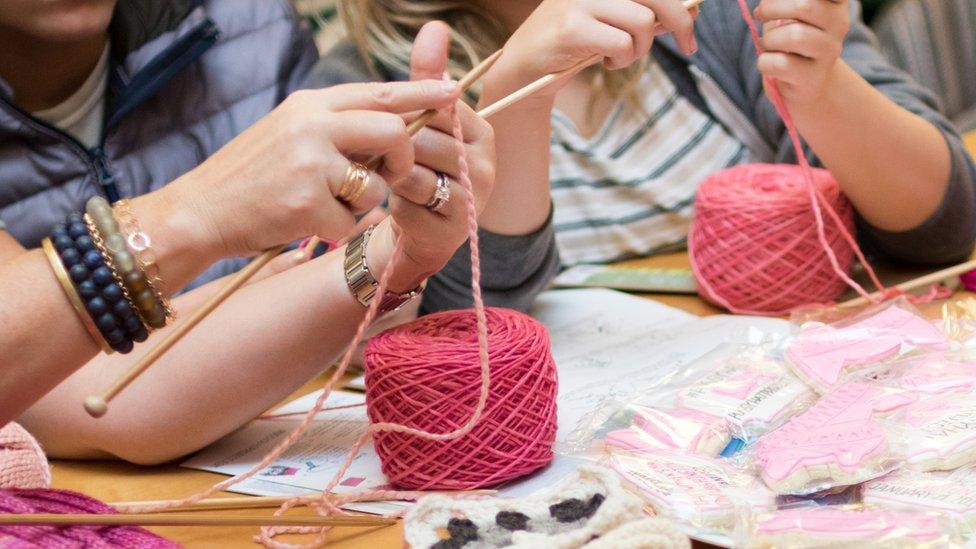
Shortages of pink yarn have forced some knitters to branch out to other colours
They've received thousands of hats from all over the globe - from as far away as Britain, Austria, and Japan. Many are learning to knit for the first time, just to take part.
The project has caught the imagination of people all over the world - but "craftivism" isn't a new idea.
Revolution and yarn
In Canada, there's the Revolutionary Knitting Circle, which first made headlines for their protest at the 2002 G8 summit. Australia has the Knitting Nannas, who protest about environmental issues by holding "knit-ins".
In the UK, activists from Wool Against Weapons knitted a seven-mile-long pink "peace scarf" to protest against the country's Trident nuclear weapon programme. Then, a year later, they repurposed it into thousands of blankets for those in need in warzones and developing nations.
But down in Chile, it's the hombres tejedores, external (knitting men) who break down stereotypes and teach other men to embrace the creative hobby.
And in cities across the world, "yarn bombing" reclaims urban spaces with a pair of needles, covering everyday items in brightly coloured knits. Like other forms of graffiti, yarn bombing can convey a message of protest - or it can just be street art for the sake of art.
Knitting for change is a global activity.
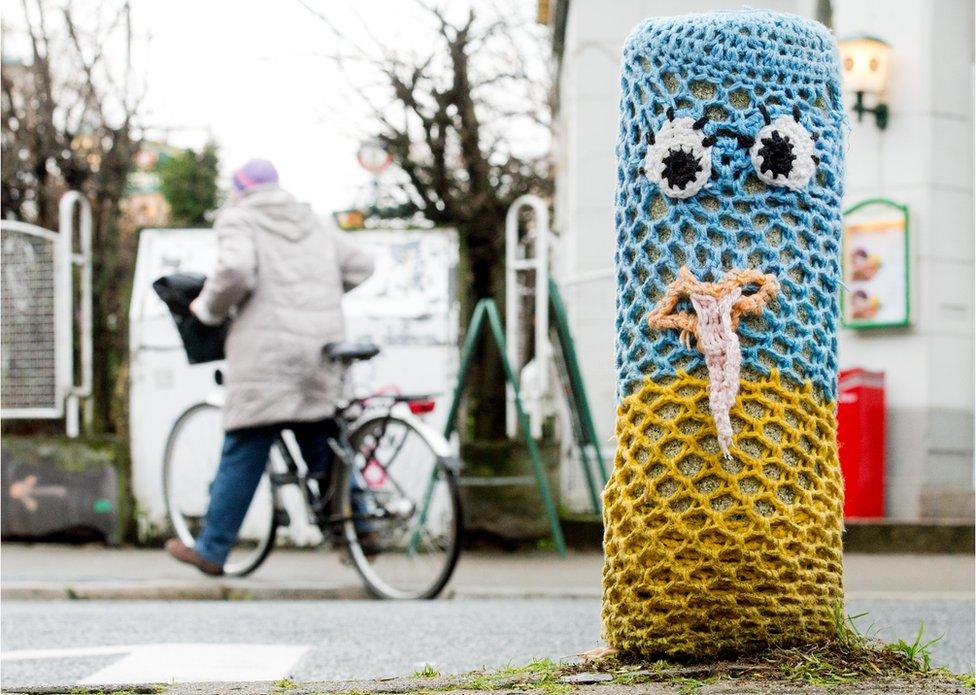
Yarn bombing as a form of street art seeks to brighten urban spaces
In the 1980s, anti-nuclear protesters in Britain - mainly women - set up a peace camp at Greenham Common, and turned an air force fence into a work of art with their knitting and material crafts.
In fact, knitting's association with political dissent goes back hundreds of years - to the grim days of the the French revolution.
Women known as les tricoteuses (knitting women) famously sat by the guillotine in Paris during the "reign of terror" - and were later immortalised by Charles Dickens in the sinister character of Madame Defarge in A Tale of Two Cities.
They would watch the executions calmly - knitting the symbolic red "liberty cap" between deaths, according to some stories. Those bonnets rouges are a symbol still worn by the figure of Marianne, the embodiment of France.
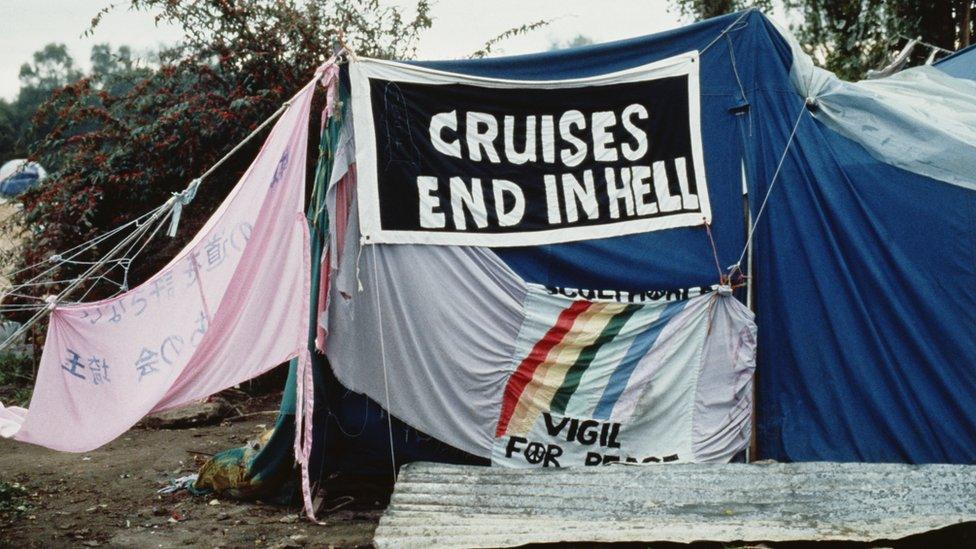
Women protesting at Greenham Common in 1983 brought their craft materials with them
The United States adopted that patriotic-yet-productive spirit during its own revolution, when women knitted clothing for soldiers during the war of independence - a wartime tradition that continued into the twentieth century.
But craftivism has come a long way, and is more likely to be hot pink than blood red.
Mainstream movement
Today, Instagram and Twitter are awash with tens of thousands of #pussyhatproject posts, external.
Punk icon Patti Smith, external, comedian Amy Schumer, external, and actress Krysten Ritter, external have all been seen wearing the recognisable shape, and the hosts of US television programme The View closed Wednesday's show wearing them.
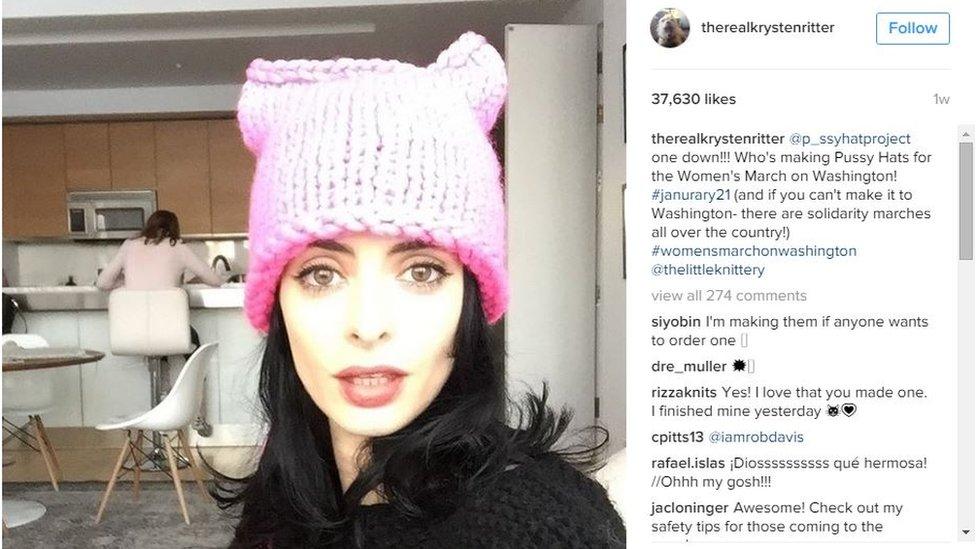
Actress Krysten Ritter, famous for Breaking Bad and Jessica Jones, is among those endorsing the project
The response, one workshop organiser says, has been overwhelming.
Diana Kane, a feminist and boutique owner in New York, started making and selling the hats for those who don't knit themselves - with the proceeds going towards a pro-choice political fund.
"We hit capacity a week ago - all volunteer labour," she said. "I've been turning people away for days."
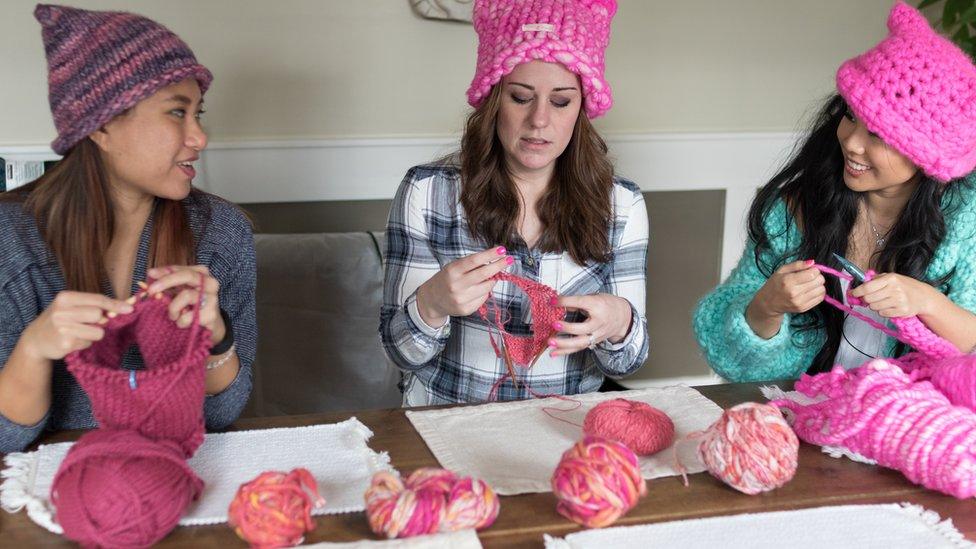
The Pussyhat Project team churn out some extra hats from the much-coveted yarn
"I think women have been able to channel their frustration and anger into something communal, creative and productive. It feels good.
"And it's given women who otherwise won't be able to participate in the marches a way to contribute and voice their anger."
It's not yet clear just how many people will attend the Women's March on Washington - perhaps as many as 200,000. The Washington DC metro is opening early and putting extra trains on to cope with demand, and hundreds of buses have registered to park in the city.
It will certainly be a large demonstration - but at least there'll be a warm hat for every marcher, and a country's supply of pink wool on show.
- Published8 October 2016
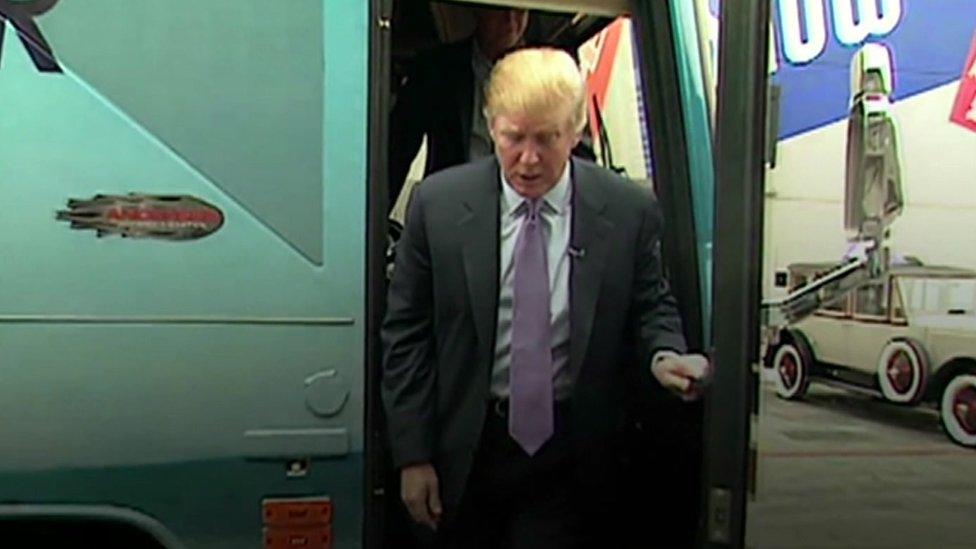
- Published19 January 2017

- Published14 November 2016
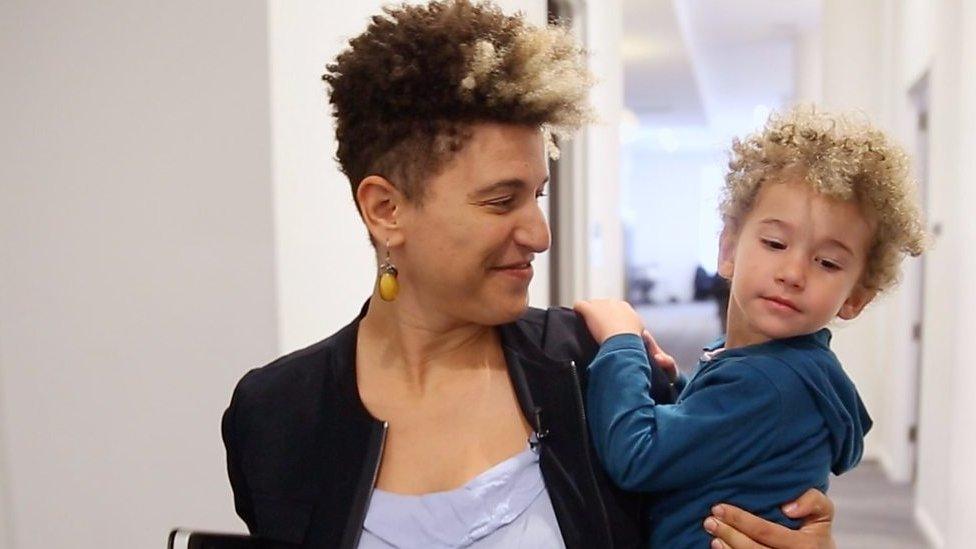
- Published6 September 2016

- Published4 August 2016

- Published19 January 2017
